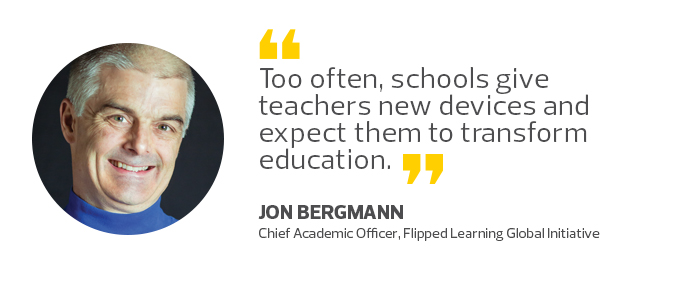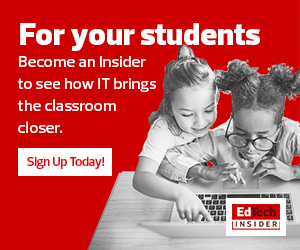Key Questions To Ask Before a Tech Rollout
Two of the core questions that we must ask when we deploy technology are “Why?” and “How?”
- Why should we use technology?
- How can we use technology well?
There is a need for a model that combines both the why of technology and the practical aspect of how technology can be used to support learning in ways that research has shown to be effective.
Flipped Learning 3.0 answers both the “why” and the “how” questions. The new paradigm was introduced by the Flipped Learning Global Initiative (FLGI), a worldwide coalition of educators, researchers, technologists, professional development providers and education leaders who are committed to flipped learning, and it is radically transforming classrooms across the globe. It is a method that both values teacher expertise and moves classrooms to more student-centered learning.
Invert the Pyramid to Make a Flipped Classroom Work
To understand why flipped learning works and should be considered as you launch a mobility program, consider Bloom’s Taxonomy, a hierarchy used to classify learning into levels of difficulty. Bloom identified a pyramid of six levels of understanding, from the most basic bottom level of simple recall, to understanding, applying, analyzing, evaluating and creating.
In traditional classrooms, most class time is used for direct instruction, which usually is at the remembering and understanding levels of the taxonomy (the basic “easy stuff”). Students are usually then sent home to do the more difficult tasks, such as applying their knowledge, analyzing and evaluating data, and creating work.

Many students do not have the support structures at home that allow them to get help with the more difficult cognitive tasks. In a flipped learning class, however, Bloom’s Taxonomy is reversed. Instead of the bulk of class time being used for easy work, class time is used to create, analyze and apply learning.
Finding a Better Way to Use Tech
Though using Bloom’s Taxonomy makes sense, there is a better way. It is unrealistic in most K–12 settings for the bulk of class time to be used for creativity and evaluation. Instead, most class time should be spent engaging in application and analytical activities — the middle-of-the-road materials. This way, the classroom teacher is present when students need the most help.
Flipped learning fundamentally changes the teacher’s role. Teachers in a flipped classroom are not just disseminating information; rather, they add value by taking students to the upper reaches of Bloom’s Taxonomy.
Now, what about the how? How do you implement Flipped Learning 3.0 into your classroom with efficacy? Many researchers, thought leaders and master teachers from across the globe are sharing best practices and providing top-level training at FLGI. This coalition, which came together in June 2016, is investigating innovative uses of one-to-one technology, sharing expertise and building a community of professionals.
If you are looking for a compelling reason to use your new one-to-one devices or to support the new BYOD program at your school, consider flipping your thinking and trying flipped learning. It values teachers’ content knowledge, yet it leaves room for student exploration and ownership of their learning.









